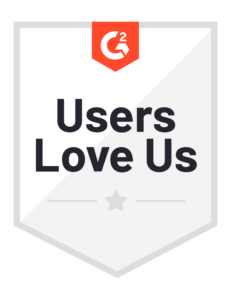Manual vs. Automated Balance Sheet Reconciliations
Blog post
Share
With a shrinking finance and accounting workforce, organizations need to reevaluate their strategy for attracting and retaining top talent. Manual, low-value processes like balance sheet reconciliations cause teams to focus the bulk of their time on repetitive tasks as they complete the financial close and keep them from becoming strategic partners to the business. The challenges that come from spreadsheets and other manual methods of reconciliations don’t have to impact your entire organization; financial automation software can pave the way for many opportunities to maximize your finance and accounting teams’ time and effort.
Manual Balance Sheet Reconciliations
It’s no question that spreadsheets serve many essential functions for individuals. They can be used to organize a personal budget, accumulate important figures, and more. However, after a certain point, the exclusive use of spreadsheets only becomes burdensome. Spreadsheets were created in the 1980s to manage the budget of a four-person household, not an organization’s financial reporting. Using spreadsheets to perform your organization’s balance sheet reconciliations presents many challenges and risks.
Increased Spreadsheet Errors
While a useful tool, spreadsheets are notoriously known for being susceptible to errors. In fact, up to 90% of spreadsheets contain errors in some manner. Not only do spreadsheet errors lead to significant consequences if not promptly corrected, but they also increase the risk for your organization. Spreadsheets should be a supplementary tool in the reconciliation process rather than the primary tool used.

Lack of Visibility and Control
Executing the financial close with spreadsheets leads to a lack of visibility and control throughout the process. Any changes or adjustments made during the close are often hard to catch until the close cycle is completed. When these changes are caught and corrected after the close, organizations have to release a financial restatement, whether the changes are material or immaterial. An absence of visibility and control over the close process and the resulting financial reports affect all shareholders involved.
Inability to Standardize Data Documentation
As spreadsheets are shared amongst colleagues and financial leadership, specific layouts and broken calculations can cause bottlenecks and errors in balance sheet reconciliations. Once the spreadsheets are compiled to prepare for reconciliations, deciphering different formats and calculations across hundreds of documents further impedes the financial close.
The lack of standardization that exists when accounting teams entirely rely only on spreadsheets means accountants are using their time decoding and fixing spreadsheet calculations rather than focusing on strategic initiatives.
Improper Assessment of Account Risk
With spreadsheets and other manual methods of reconciliations, the assessment of account risk is difficult. Instead of prioritizing high-risk accounts, the focus is spread equally across all balance sheet accounts, which increases the organization’s chance that a risk factor might be missed in a key account.
Automated Balance Sheet Reconciliations
Manual balance sheet reconciliations often fall short when finance and accounting teams exclusively rely on them for financial reporting. Automated reconciliations takes spreadsheets and ERP systems to the next level, providing opportunities and benefits for any organization.
Increased Accuracy
Accuracy is key when reconciling accounts; inaccurate financial reporting raises several risks for non-compliance in any organization. Performing the close with financial automation software improves the quality of data used in the balance sheet reconciliation process. Any inconsistencies and miscalculations are flagged as exceptions, enabling teams to focus their valuable time investigating those highlighted exceptions.

Enhanced Visibility and Control
Visibility and control throughout the financial close process are essential for accounting and financial leaders. Obtaining real-time updates on the progress of balance sheet reconciliations enables CFOs and Controllers to visualize how the team is performing on a short- and long-term basis. The ability to follow along as the period-end close is being completed also gives financial and accounting leaders the chance to correct any errors or bottlenecks before they result in greater ramifications.
Standardized Data Documentation
Compiling financial data and supporting documentation in cloud-based software takes the guesswork out of decoding various layouts and calculations within spreadsheets. Moving from spreadsheets to a cloud solution gives finance and accounting teams visibility into all accounts in a centralized location, meaning every piece of data is correctly imported into the software.
Not only that, but financial automation software can streamline your organization’s workflow even further by simplifying the approvals and review process. The quicker your team can move onto the next step of the financial close, the more time they spend on value-adding initiatives.
Decreased Account Risk
Using cloud-based financial automation for balance sheet reconciliations allows the software to automatically reconcile low-risk accounts and flag high-risk accounts based on the organization’s pre-defined rules. When exceptions are brought to the finance and accounting team’s attention, they can focus their time on those highlighted high-risk accounts and investigate the discrepancies.

After the culmination of the period-end close, financial automation creates an easy-to-follow activity log for both internal and external auditors. The automated audit trail contains information in supporting documents, attachments, comments, and time stamps, which further simplifies the auditing process. Additionally, an increase in accuracy and matching rates means your organization can effectively mitigate risk and remain compliant.
Instead of allowing these balance sheet reconciliation challenges to hinder your organization’s chance of talent attraction and retention, utilize technology to turn these challenges into major opportunities. Learn how your organization can best navigate the modern face of the financial close with this eBook.
Written by: Lauren McCrohan







